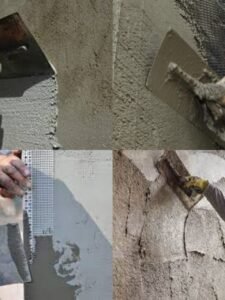Introduction to Rustic Finish
The concept of a rustic finish in interior design draws heavily from historical contexts, celebrating the beauty inherent in natural imperfections and handcrafted details. This design style, with its roots embedded in rural architecture and countryside aesthetics, has been embraced for its warm, inviting, and organic appeal. As society increasingly gravitates towards authenticity and sustainability, a rustic finish stands out by infusing spaces with a sense of heritage and simplicity.
At its core, a rustic finish emphasizes the use of natural materials, such as wood, stone, and metal, often left in their raw or minimally processed state. These materials offer a tactile and visual richness that mass-produced modern items often lack. Weathered appearances, achieved through techniques like distressing, add layers of character, suggesting a history and story behind every piece. This patina of age can be replicated using modern methods, but nothing quite compares to the genuine article aged by time.
Handcrafted details are another cornerstone of rustic finishes, reflecting traditional craftsmanship and artisanal skills. These elements bring an unmatched uniqueness to each space, making them distinct and personalized. Whether it is a timeworn wooden table, a rugged stone fireplace, or hand-stitched textiles, these pieces impart a sense of artistry and deliberate design.
The growing popularity of rustic finishes in modern interior design can also be linked to the broader trend of creating more meaningful and tranquil living environments. In a fast-paced, technology-driven world, many people find solace in spaces that offer a connection to nature and a slower, more reflective pace of life. By incorporating rustic elements, one can achieve a serene and grounded interior, evoking the calm of a countryside retreat.
As we delve further into this blog post, we will explore various aspects of achieving the perfect rustic finish, providing practical ideas and inspiration to help you transform your space with vintage charm
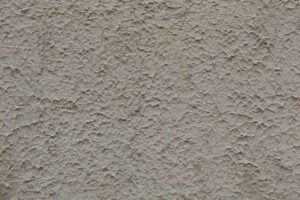
Materials for a Rustic Finish
Achieving a rustic finish in your space relies heavily on the choice of materials that exude an aged and vintage charm. The essence of rustic design lies in its embracing of natural, worn, and unrefined elements. Natural woods and reclaimed wood are pivotal in this context, as they offer an organic texture and historical nuance that pre-treated or synthetic materials simply can’t replicate. Reclaimed wood, in particular, carries a story of its previous life, marked by unique grains, knots, and sometimes even nail holes, adding a distinctive character to your rustic finish.
Stone is another cornerstone of rustic aesthetic, characterized by its rugged, unpolished surface. Whether it’s natural stone for flooring, backsplashes, or accent walls, it brings an earthy solidity to the design. Subtle variations in color and texture in stones like limestone, slate, and granite contribute to its visual appeal. Similarly, metals with a patina, such as copper, bronze, and wrought iron, are essential. They offer a weathered look that hints at a history, effortlessly infusing a vintage character into the space.
Textiles play a complementary role by adding warmth to the starkness of wood, stone, and metal. Natural fibers such as linen, wool, and burlap contribute to the rustic charm by providing a soft contrast to the harder materials. These textiles frequently exhibit imperfections like slubs and weave variations, which bolster their rustic appeal.
When sourcing these materials, it’s crucial to prioritize authenticity. Visit salvage yards, antique stores, and specialized suppliers who deal with reclaimed wood and salvaged stone to find genuine pieces with natural wear and patina. Online platforms and auctions can also be fruitful arenas for discovering rare, authentic materials. When selecting materials, consider their intended application and the specific characteristics you wish to highlight in your space. Authentic materials not only enhance the aesthetic but also contribute to the durability and timelessness of your rustic design.
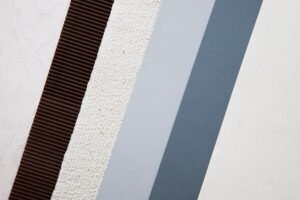
Techniques for Creating a Rustic Look
Embracing a rustic look requires employing a variety of techniques to authentically transform modern materials into pieces that exude vintage charm. Below, we delve into several effective methods, such as distressing, sanding, staining, and using chalk paints, providing a comprehensive guide for beginners looking to achieve a rustic finish.
Distressing
Distressing is a technique that involves intentionally wearing down certain areas of an object to give it an aged and vintage appearance. Begin by selecting the item you wish to distress—wooden furniture often works best. Lightly sand the edges, corners, and any natural wear points. For more significant distressing, use tools like a wire brush or hammer to create dings and scratches. For a more advanced touch, apply a base coat of dark paint, followed by a lighter topcoat; then, selectively sand down to reveal the underlying layer.
Sanding
Sanding is integral to most rustic finishes, as it smooths the wood’s surface while adding charm. Use medium-grit sandpaper (around 120 grit) to remove any existing finishes and reveal raw wood. Follow with a finer grit (220 grit) for smoothing. For a truly worn look, concentrate sanding on edges and areas naturally subject to wear and tear. Sand in the direction of the wood grain to avoid scratches. Electric sanders can speed up this process but be cautious not to overdo it.
Staining
Staining enhances the natural wood grains, imbuing depth and richness. Select a wood stain color that complements your overall aesthetic—warm, earthy tones are ideal for a rustic finish. Apply the stain evenly using a brush or cloth, ensuring complete coverage. Allow it to sit for a few minutes before wiping away any excess with a clean cloth. For a darker shade, you can apply multiple layers or opt for a gel-based stain. Paying attention to drying times is crucial for best results.
Chalk Paint
Chalk paint is a popular option for achieving a rustic look due to its matte finish and ease of application. Prep the surface by lightly sanding it and cleaning away dust. Apply the chalk paint using broad, even strokes. The paint dries quickly, often within an hour, permitting the application of multiple coats in one day. For added depth, consider distressing the edges with sandpaper once the paint has dried. Finishing with a clear or dark wax can seal the chalk paint and provide additional texture.
For beginners, it’s advisable to start with smaller projects to get a feel for these techniques and tools. High-quality brushes and sandpaper, alongside specialty paints and stains, can significantly impact the final result, so investing in good materials is worth the effort. These methods offer a foundational approach to creating a rustic finish that transforms any space into a haven of vintage charm.
Incorporating Rustic Elements in Furniture
A harmonious blend of history and charm, rustic furniture significantly enhances the character of any space. Applying a rustic finish to various types of furniture, such as tables, chairs, cabinets, and shelves, can create a warm, inviting atmosphere. This look is achieved through techniques that emphasize natural textures and aged aesthetics, capturing the essence of vintage allure.
For tables, a distressed wood finish can be particularly effective. This can be achieved by sanding the edges and surfaces to reveal underlying layers of paint or wood, then applying a wax or stain to protect the finish and add depth. Similarly, rustic chairs often feature weathered wood with visible grain and knots, or can be upholstered with fabrics such as burlap or linen that convey a vintage feel. Weathered metal accents on the legs or arms can further enhance the rustic charm.
Rustic cabinets and shelves can be treated to highlight their robust construction and natural beauty. Using reclaimed wood for these pieces not only adds a genuinely rustic feel but also promotes sustainability. The natural imperfections such as cracks or uneven surfaces contribute to the charm, evoking a sense of history. These pieces can be finished with natural stains or left untreated to emphasize their raw beauty.
Popular rustic furniture styles include farmhouse, industrial, and shabby chic, each bringing a unique flavor to interior design. Farmhouse style emphasizes simplicity and practicality, often using large wooden tables and soft, well-worn seating. Industrial style combines raw metal and exposed wood, creating a rugged yet sophisticated ambiance. Shabby chic, with its distressed finishes and pastel hues, offers an elegant, feminine touch.
Both DIY enthusiasts and those preferring ready-made options can achieve the rustic look. DIY projects offer the satisfaction of handcrafting unique pieces, tailored specifically to one’s space and taste. For those with limited time or resources, many retailers offer an array of pre-finished rustic furniture that effortlessly brings vintage charm to any home.
Overall, incorporating rustic elements into furniture is a versatile and rewarding way to transform your living spaces, imbuing them with timeless beauty and comforting character.
Rustic Finish in Home Decor
Integrating a rustic finish into home decor elements can transform any living space, injecting it with a sense of warmth and vintage charm. Picture frames are an ideal starting point; opting for weathered wood or distressed metal frames can instantly add an aged, rustic feel to your walls. These frames can house black-and-white photographs or vintage prints, creating a cohesive look that accentuates the rustic aesthetic.
Mirrors also serve as excellent focal points when designed with a rustic touch. Consider using wooden frames with visible grain and natural imperfections, or even repurposing old window frames as mirrors. Not only do they enhance the rustic theme, but they also reflect light and make rooms appear larger and more inviting.
Lighting fixtures present another opportunity to infuse rustic charm. Think wrought iron chandeliers, lantern-style pendants, or fixtures constructed from reclaimed materials like barn wood or metal pipes. These elements blend seamlessly into the rustic decor while providing both functionality and vintage appeal.
Decorative accessories are where you can let your creativity shine. Items such as wooden trays, antique vases, or galvanized metal buckets filled with fresh or dried flowers can add subtle yet impactful rustic touches. Handmade or vintage-inspired textiles, such as burlap pillows, knitted throws, or lace curtains, can further enhance the cozy, lived-in feel synonymous with rustic decor.
For those looking to undertake manageable projects, consider chalk-painting furniture or adding barn doors to entryways. The goal is to infuse pieces with character and history, creating a space that feels timeless and welcoming. The incorporation of such elements into existing decor can be gradual; start small by adding a few rustic accents and build from there, ensuring a balanced and harmonious blend.
Ultimately, whether through minor adjustments or bold statement pieces, achieving a rustic finish in home decor is a rewarding endeavor that turns any space into a charming, vintage-inspired retreat.
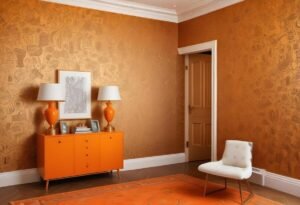
Rustic Finish for Walls and Floors
Creating a rustic finish for walls and floors can transform a room into a cozy, vintage-inspired haven. For walls, there are several techniques and materials to consider. Shiplap, a type of wooden board used commonly in rustic decor, provides a clean yet textured look and is quite easy to install. Planking offers a similar aesthetic but with wider boards, giving off a more bold farmhouse feel. Exposed brick is another excellent option; it adds raw texture and can either be left in its natural state or painted for a cleaner finish. Wood paneling, especially when applied horizontally or vertically, enhances the warmth and character of the room.
When it comes to floors, distressed hardwood is an ideal choice. The aged and worn look of the wood perfectly complements the rustic style. Ensure the floors are properly sealed to maintain their durability while showcasing their natural beauty. Stone flooring, with its natural and earthy feel, is also a great way to achieve a rustic finish. Stone floors are long-lasting and add to the overall durability of the space.
Preparation is crucial to achieving the desired rustic look. For shiplap and planking, surfaces should be clean and smooth to ensure the boards adhere properly. If installing wood paneling, it is advisable to sand and prime the walls to facilitate better adherence and longevity of the materials. For exposed brick, it is important to clean the bricks and remove any dust or debris to make sure mortar and paint, if used, will stay intact.
Maintenance of these rustic surfaces should not be overlooked. Regular cleaning of wooden surfaces with non-abrasive cleaners keeps them looking fresh. For stone flooring, periodic sealing, and maintenance will keep it in peak condition, preventing any areas from becoming dull or damaged. By incorporating these rustic finish techniques and maintaining them diligently, you can achieve a timeless, cozy vintage charm throughout your space.
Combining Rustic Finish with Modern Design
Integrating a rustic finish with modern design principles involves a meticulous balance between traditional craftsmanship and contemporary elegance. The juxtaposition of these styles can elevate your interior spaces into a realm that exudes charm and sophistication. Achieving such harmony requires a thoughtful selection of textures, colors, and materials that complement rather than compete with each other.
For example, consider a modern loft with exposed brick walls and industrial beams. Introducing reclaimed wooden furniture or vintage light fixtures can infuse warmth and character into the otherwise sleek environment. In this instance, the rustic elements bring an inviting historical touch, softening the starkness of modernity. Another effective combination can be seen in a minimalist kitchen outfitted with state-of-the-art appliances where a distressed wood table or open shelving made from repurposed timber adds depth and a lived-in feel.
There are several successful case studies showcasing the powerful impact of this blend. A notable example is a Scandinavian-inspired living space that incorporates rustic elements such as a weathered wooden coffee table set against a backdrop of polished concrete floors. The interplay between the rustic wood and the clean lines of modern furniture results in an astonishingly cohesive design. Similarly, boutique hotels often achieve an elegant rustic-modern blend by featuring vintage décor items juxtaposed with contemporary art and cutting-edge furnishings.
To find the perfect balance, focus on the proportion and scale of rustic and modern elements. Often, a 70-30 ratio works fair, where one style dominates and the other complements. Natural materials like wood, stone, and metals serve as strong cohesion points. Emphasize neutral color palettes with strategic pops of accent color to maintain visual harmony. Additionally, allow rustic and modern design philosophies to guide your choice of accessories – mixing antique pieces with modern artwork or metallic finishes can create a balanced, layered look.
The intricate fusion of rustic and modern design ultimately crafts spaces that are not only visually appealing but also rich in texture and story, making them highly functional yet uniquely beautiful.
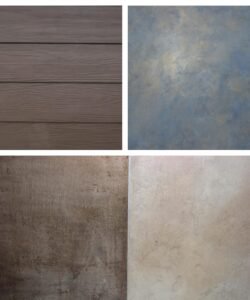
Maintaining and Caring for a Rustic Finish
Maintaining a rustic finish requires a balance of regular care and specialized attention to preserve its unique charm. Cleaning techniques must be gentle to protect the integrity of the natural materials often used in rustic decor, such as reclaimed wood, metal, and stone. A soft, damp cloth is generally sufficient for regular dusting and cleaning. Avoid abrasive cleaners and tools that might damage the surface. Instead, opt for pH-neutral cleaners and ensure that any cleaning solution is thoroughly wiped off to prevent residue buildup.
Touch-up methods are essential for keeping your rustic items in top condition. Scratches, dents, and minor damages are common in rustic finishes, contributing to their natural, aged look. However, severe damage can detract from the aesthetic. For wooden surfaces, consider using a wood filler that matches the existing tone, sanding lightly, and applying a matching stain if needed. Metal elements may benefit from a rust remover or a protective coat of metal varnish to prevent further corrosion. Always follow the manufacturer’s recommendations for products and application techniques.
Long-term maintenance goes a long way in ensuring your rustic items retain their vintage appeal. Regularly inspect your rustic furnishings and decor for signs of wear and tear. Applying a layer of beeswax or a similar non-toxic product can nourish wood surfaces, preventing them from drying out and cracking. For stone surfaces, a sealant can help protect against stains and moisture penetration. When it comes to metal elements, periodic application of a protective wax or oil can stave off rust and maintain their luster.
It’s paramount to use the right products tailored to the specific materials of your rustic items. Natural materials, while durable, require appropriate treatment to maintain their charm and longevity. By integrating these cleaning and maintenance strategies, you can preserve the rustic finish’s unique appeal and ensure your space remains a haven of vintage charm for years to come.
